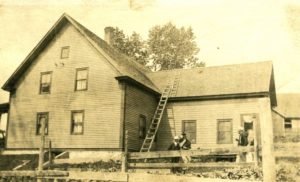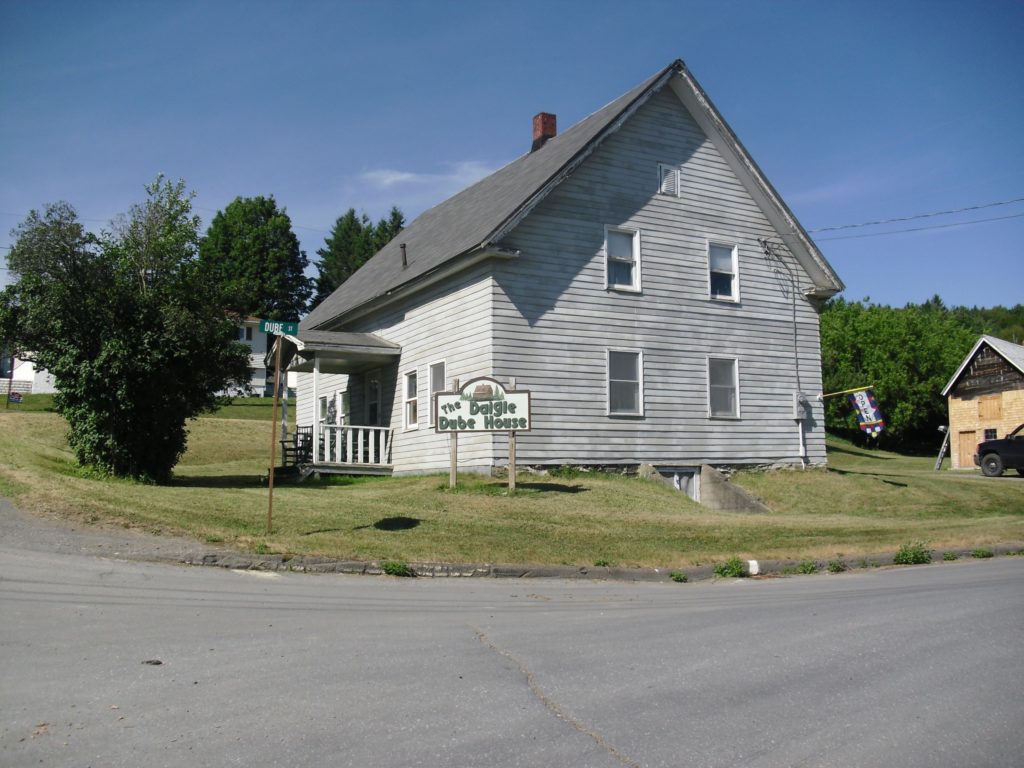
The Daigle-Dube house, home to five generations of one family, ca. 1910.
One of the rarest examples of a traditional Acadian home will be the future centerpiece of preservation efforts in Aroostook County.
Piece by piece, volunteers in Fort Kent have stripped away post-1900 plumbing, electricity, and building materials to reveal the bones of a home occupied by five generations of the Daigle-Dube family. A grant from MaineCF’s Belvedere Historic Preservation and Energy Efficiency Fund has helped support the Fort Kent Historical Society project, which started two years ago with foundation and exterior work.
Jean Baptiste Daigle, a wealthy Acadian who farmed hundreds of acres, built the home around 1840.
Acadian homes were constructed like boats – similar to structures built a thousand years ago by Normandy shipbuilders – with tall, peaked roofs and square-cut logs. At just under 2,000 square feet, Daigle’s home was likely the largest in Fort Kent, said Chad Pelletier, the historical society’s curator.

A more recent photo shows the home prior to exterior renovation that will restore the structure to how it looked in 1900. Photos courtesy Fort Kent Historical Society
“We were afraid we were going to lose it,” said Pelletier. Fortunately, the Dube family donated the house to the historical society after the death of Therese Dube, who lived there for nearly 84 years until shortly before her death in 2007. Inside, volunteers found a time capsule of life in Fort Kent; 80 percent of the home’s artifacts inside were accumulated by the original owners, said Pelletier.
The project will offer visitors a look at life around 1900 when it was occupied by four generations of the family. Volunteers will strip 50-plus layers of wallpaper, which will be reproduced for the restored home. Pelletier said furnishings will include both old handmade furniture and second-generation, store-bought appliances.
The historical complex, which includes a train station and other buildings, will illustrate Fort Kent’s past as a thriving community that drew not only French but Polish, Syrian, and Lebanese residents. Pelletier hopes interpreting the house as it existed at the turn of the century will attract more interest from visitors.
“People care about memories and what they remember,” said Pelletier.





